- Home
- Peter Ackroyd
London: The Biography Page 7
London: The Biography Read online
Page 7
The Battle of London, however, was over. Eleven bodies have recently been recovered just south-west of Ludgate, with some suggestion that they had been dismembered, while a hoard of several thousand coins of that period was found by the Walbrook.
The new monarch’s primary task was to subjugate the city. Work began on three military stockades at various points on the perimeter wall-Montfichet Tower, Baynard’s Castle and against the south-east section of the Wall, a structure that has since become known as the “Tower of London.” But the Tower never belonged to London and was considered by the citizens to be an affront or threat to their liberty. In The Making of London, Sir Laurence Gomme contemplates their displeasure when “they heard the taunts of the people who said that these walls had been built as an insult to them, and that if any one of them should dare to contend for the liberty of the city he would be shut up in them and consigned to imprisonment.”
After a great fire in 1077 which, like its predecessors, seems to have devastated much of the city, a stone tower was built in place of the original fortification; it took more than twenty years to complete, and pressed labour from the neighbouring shires was used in its construction. It was called the White Tower, and rose some ninety feet in the air to emphasise its power over the city. Elaborate rituals were drawn up in order to formalise the presence of London’s leaders in the Tower for judicial or administrative purposes, but it remained outside their jurisdiction. Built of alien material, cream-coloured Caen stone from Normandy, it was a visible token of foreign rule.
William was also graciously pleased to grant a “Charter” to London, on a tiny parchment less than six inches in length. It is written in Anglo-Saxon and French. Addressed to “the chiefs of the city” it granted to London “rights” that the city already possessed and had had since the days of Roman domination. “I do you to know that I will that you be all law worthy that were in King Edward’s day,” runs the translation. “And I will that every child be his father’s heir after his father’s day. And I will not endure that any man offer any wrong to you. God keep you.”
It may seem innocuous but, as Gomme suggests in The Governance of London, it represents “an entirely new constitutional factor in the history of London.” Londoners were to be allowed to live under the rule of law that the city itself had established. The king was asserting his sovereignty over the ancient governance of London.
William had, however, recognised the one central fact-that this city was the key both to his own fortunes and to those of the country he had conquered. That is why he had inaugurated the transition of London from the status of an independent city-state to that nation’s capital. In 1086 the Domesday Survey left London uninspected, no doubt on the ground that the complex financial and commercial activity within the city could not usefully be considered as part of the king’s revenue. At the same time the Norman king and his successors initiated an inspired plan of public works in order to emphasise the central place of London in the new politics. The cathedral of St. Paul was rebuilt and William’s successor, his son William Rufus, began the construction of Westminster Hall; a number of monastic houses and nunneries, together with priories and hospitals, were also erected in this period so that London and its environs were the site of prolonged and continual construction. The building and rebuilding, have been maintained ever since. The area around the Roman amphitheatre, for example, was cleared in the early twelfth century. In the same area the first guildhall was completed by 1127, and a second built in the early fifteenth century.
The earliest form of public administration was the folkmoot, which met three times a year, in the Roman amphitheatre and then latterly by St. Paul’s Cross. There was also a more formal court, known as the hustings. These institutions were of the greatest antiquity, dating to Saxon and Danish times when the city was autonomous and self-governing. The territorial divisions of London, still in existence, were also of very early date. By the eleventh century the principal unit of territory had become the ward, which was led and represented by an alderman. The ward was more than a collection of citizens administering their own streets and shops; it was also a unit of defence and attack, with a midsummer inspection when, according to an official document dating from the reign of Henry VIII, “ev’y alderman by hymself musteryd hys owne warde yn the fields, vewyng theym in harnes and sawe that ev’y man had a sworde and a dagger and suche as were not meate to be archars were turnyd to pykes.” As late as the fourteenth century a clerk could term London a respublica, and in this account of a carefully marshalled citizen army it is possible to trace the force and antiquity of the republican ideal.
But if the ward boundaries were the most significant within the city, they were not necessarily the most distinctive. Beneath the ward were the precincts with their own assemblies, and below them the individual parishes with their self-governing vestries. The city embodied a series of intricately related authorities, and that network of affiliations and interests has materially affected its life. Throughout the nineteenth century, for example, there were continual complaints about the rigidity and stubbornness of the city authorities. This resistance to change was the legacy of a thousand years, affecting and obscuring the capital as powerfully as its coal-smoke and its fog. It is also the setting in which succeeding events are best understood.
William the Conqueror’s successor, William Rufus, was characterised by his attempt to impose ever more extortionate taxes and dues and tolls on the citizens. In his struggles with the Norman barons ensconced in England, it was also Rufus’s custom to send prisoners to be executed in London; it was a token of its role as capital, perhaps, but also of the king’s authority.
After the death of Rufus in 1100, his brother, Henry I, hastened to the city in order to be acclaimed as the new sovereign. The records of his reign include a list of aldermen, from 1127, which displays so comprehensive a mixture of English and French names that a thoroughly ordered and working association between citizens who were now properly “Londoners” can be assumed. In fact the study of the names of Londoners becomes of extreme interest and significance in this period, as Old English names are gradually supplanted by those of French origin. Surnames were by no means universal, but were attached to a person because of locality or occupation-Godwinus Baker was thus distinguished from Godwin Ladubur (moneyer) and Godwyn Turk (fishmonger) or Godwinne Worstede (mercer) and Godwynne Sall (hatter). Other citizens were identified by patronymics or, more commonly, by nicknames. Edwin Atter’s name meant Edwin of the sharp tongue while Robert Badding’s implied an effeminate man; Hugh Fleg was “wide awake,” Johannes Flocc had woolly hair, John Godale sold good ale while Thomas Gotsaul was honest.
Even as they associated with each other in trade and commerce, however, the relationship of the citizens with the king became more problematic. For him, the city was predominantly a place to be “farmed” for revenue; the reason why Henry rarely interfered in the life of London was simply that he needed it to prosper in order to benefit from its wealth.
After Henry’s death in 1135, the dynastic struggles of the various claimants to the throne were directly affected by the loyalties and allegiances of Londoners; Henry’s nephew Stephen, Count of Blois, claiming the right of succession, promptly “came to London, and the London folk received him … and hallowed him king on midwinter day.” So says the Anglo-Saxon Chronicle, and another ancient source adds that the “Alderman and wise folk gathered together the folkmoot, and there providing at their own will for the good of the realm unanimously resolved to choose a king.” The citizens of London had, in other words, formally elected a king for the entire country. It is not clear what Stephen promised or granted the city, in return, but from this time forward it takes the first place in national affairs with a degree of independence which suggests that London is almost self-governing.
The coronation of Stephen, however, was not in itself enough. The landing in 1139 of his rival, Henry’s daughter the Empress Matilda, and his own capture at the Battle
of Lincoln in 1141, meant that London was forced to choose again. A great conference was held at Winchester in order to consider the royal claims of Matilda, and a speech in her favour by Stephen’s own brother was concluded with the following significant remarks: “We have despatched messengers for the Londoners, who, from the importance of their city in England, are almost nobles, as it were, to meet us on this business; and have sent them a safe-conduct.” They arrived on the following day, saying that they had been sent a communione quam vocant Londoniarum-“from the community, or commune, of London.” This testimony from William of Malmesbury is the clearest possible evidence of the city’s significance. As the nation divided in baronial wars, London had ceased to be a capital and had once again become a city-state. The events of Matilda’s short subsequent reign reinforce this impression. She tried to curb the power of London and unwisely demanded money from its richest citizens. That is why, when Stephen’s own queen, Maud, approached London, its inhabitants rushed into the streets, according to Gesta Stephani, with weapons “like thronging swarms from beehives” in order to support her. Matilda fled from the irate citizenry, and never regained the throne.
A proviso must be entered here, if only to dispel the impression of thorough independence. When the national policy was disrupted by dynastic struggle, then London naturally took the lead. But in a peaceful well-ordered kingdom the citizens, equally naturally, accepted the authority of the sovereign. So it was that the reign of Henry II, Matilda’s son and Stephen’s successor, marked a slight diminution of the city’s authority. In his charter the king granted to Londoners “all their liberties and free customs which they had in the time of Henry my grandfather,” but the royal sheriffs conducted much of the administration under the king’s direct control.
The murder of Thomas à Becket in the winter of 1170 at Canterbury, for example, ought to have been a matter for Londoners. The archbishop was known to his contemporaries as “Thomas of London” and for many centuries he was the only Londoner to be canonised; his theatricality and flamboyance were also characteristic of the city. But there is no evidence of any popular support for his cause among Londoners. Perhaps he is one of those striking figures in the city’s history who move beyond their immediate context into eternity.
Yet it was Becket’s own twelfth-century biographer, William Fitz-Stephen, who celebrated the more earthly values of the city in that period. His account is written in the new style of urban encomia, since the formation of flourishing cities and the conduct of their citizens were then at the centre of European debate, but Fitz-Stephen’s depiction is nevertheless remarkable for its enthusiasm. It is also highly significant as the first general description of London.
He describes the sound or “clatter” of the mills, turned by streams in the meadows of Finsbury and Moorgate, as well as the shouts and cries of the market vendors who “have each their separate station, which they take every morning.” There were many wine shops close by the Thames, to accommodate the local artisans as well as traders who came to the docks; there was also a large “public eating-house,” where servants could purchase bread and meat for their masters or where the local vendors could sit and eat. Fitz-Stephen also depicts the “high and thick wall” which surrounded and protected all this activity, with its seven double gates and northern towers; there was also a great fortress to the east, “the mortar used in the building being tempered with the blood of beasts,” and two “strongly fortified” castles on the western side. Beyond the walls were gardens and vineyards, the mansions of the noble and the powerful interspersed among them. These great houses were generally in the western suburbs, where Holborn is now situated, while to the north were meadows and pastures which bordered upon “an immense forest” of which Hampstead and Highgate are the only remnants. Just beyond the city wall, on the north-western side, was a “smooth-field” now known as Smithfield where horses were sold every Friday. In paddocks close by, oxen and pigs were also slaughtered and sold. The same activity had taken place in precisely the same area for almost a thousand years.
Fitz-Stephen’s account is distinctive for the emphasis he lays upon the energy, combativeness and vivacity of the citizens. There were games of football every evening in the fields outside the city, when the young men were watched and cheered by their teachers, parents or fellow apprentices; upon each Sunday, at the same time, there were games of combat when they rode against one another “with lances and shields.” Even in its sports London had a reputation as a violent city. At Easter a tree was fixed into the middle of the Thames with a target hung upon it; a boat was rowed hard against it, carrying a young man with a lance. If he missed the target he fell into the river, to the amusement of the spectators. In the coldest days of winter, when the marshland of Moorfields froze, the more sportive citizens would sit upon great blocks of ice, which were pulled along by their friends; others fashioned skates from the shin bones of animals. But again there was an element of competition and violence in their pursuit; they skated towards each other until “either one or both of them fall, not without some bodily hurt” and “very frequently the leg or arm of the falling party” was broken. Even the lessons and debates of schoolboys were characterised in combative terms, with a steady stream of “scoffs and sarcasms.” It was a world of bear-baiting and cock-fighting, somehow consonant with Fitz-Stephen’s report that London could raise an army of 80,000 men, a world of violence and laughter mingled with what Fitz-Stephen terms “abundant wealth, extensive commerce, great grandeur and magnificence.” His is a portrait of a city celebrating its destiny.
It was a time, therefore, of prosperity and growth. The docks were expanding, as the waterfront was continually reclaimed and extended in order to accommodate the Flemings and the French and the Hanseatics as well as the merchants from Brabant and Rouen and Ponthieu; there was trade in fur, wool, wine, cloth, grain, timber, iron, salt, wax, dried fish and a hundred other commodities to feed, clothe and support an ever increasing population. Most of this population was itself busily engaged in commerce: the furriers of Walbrook, the goldsmiths of Guthrun’s Lane, the butchers of East Cheap, the shoe-makers of Cordwainer Street, the mercers in West Chepe, the fishmongers in Thames Street, the woodmongers of Billingsgate, the candlestick-makers of Lothbury, the ironmongers of Old Jewry, the cutlers of Pope’s Head Alley, the prayer-bead-makers of Paternoster Row, the vintners of Vintry, all of them involved in perpetual trade.
The city was indeed a much noisier place than it is now, filled with continual cries of porters and water-bearers as well as the general uproar of wagons and bells, of blacksmiths and pewterers beating out their wares, of porters and apprentices, of carpenters and coopers working alongside each other in the same small area of lanes and alleys. There was of course the smell as well as the noise, concocted from tanneries and breweries, slaughter-houses and vinegar-makers, cook-houses and dung-heaps as well as the ever flowing tide of refuse and water which ran down the middle of the narrower streets. All this created a miasma of deep odours which could not be dispersed by even the most violent wind. It was further enriched by the increased use of coal by brewers and bakers and metal-forgers.
Throughout this period, too, there was a continual process of building and rebuilding; not one part of the city was untouched by this expansion as new shops and “sleds” or covered markets, churches and monasteries, houses of stone and timber were constructed. When these layers of the city were excavated there lay revealed foundations of chalk and ragstone, chalk cesspits, arches of Reigate stone, building rubble, beechwood piles, oak timbers and threshold beams as well as the various impressions of walls, drains, floors, vaults, wells, rubbish-pits and stake holes. They were evidence of protracted and productive activity.
There was also constant activity in the “suburbs,” or fields just outside the walls. In the twelfth century the great priories of Clerkenwell and Smithfield, St. John and St. Bartholomew, were established, while in the succeeding century the religious houses of Austin Friars,
St. Helen, St. Clare and Our Lady of Bethlehem were also founded. The church of St. Paul’s was rebuilt, and the monastic hospital of St. Mary Spital erected. The white friars and the black friars completed their great religious houses within twenty years of each other in the west of the city. This was the part of London in which there was the most heavy investment, with vacant land being sold on the promise of immediate development while buildings and tenancies were continually being subdivided into more profitable units. Yet the grandest work in all the rebuilding was that of London Bridge. It rose in stone and became the great highway of commerce and communication which has remained upon the same site for almost nine hundred years.
On either side of the southern entrance to that bridge, there now rear two griffins daubed in red and silver. They are the totems of the city, raised at all its entrances and thresholds, and are singularly appropriate. The griffin was the monster which protected gold mines and buried treasure; it has now flown out of classical mythology in order to guard the city of London. The presiding deity of this place has always been money. Thus did John Lydgate write of London in the fifteenth century: “lacking money I might not spede.” Alexander Pope repeated his sentiments in the eighteenth, invoking, “There, London’s voice: ‘Get Money, Money still!’”
“The only inconveniences of London,” Fitz-Stephen wrote, “are, the immoderate drinking of foolish persons, and the frequent fires.” In this he was prophetic as well as descriptive. Other observers at a slightly later date in the twelfth century, however, were more critical. One Yorkshire writer, Roger of Howden, reported that the sons of the wealthier citizens would assemble at night “in large gangs” in order to threaten or assault anyone who passed by. A monk from Winchester, Richard of Devizes, was more colourful in his condemnation: for him London was a place of evil and wrong-doing, filled with the worst elements of every race as well as native pimps and braggarts. He referred to the crowded eating houses and taverns, where dicing and gambling were customary. It is perhaps significant that he also mentioned theatrum, “the theatre,” which suggests that the London appetite for drama was already being satisfied in forms other than those of the mystery or miracle plays staged at Clerkenwell. (The “first” theatres of 1576, the Theatre and the Curtain, may well descend from lost originals.) The monk also provided an interesting survey of the city’s population, comprising in part “pretty boys, effeminates, pederasts.” They are joined by “quacks, belly-dancers, sorceresses, extortioners, night-wanderers, magicians, mimes” in a panoply of urban life that would be celebrated, rather than condemned, in other centuries by writers as diverse as Johnson and Fielding, Congreve and Smollett. It is, in other words, the permanent condition of London.

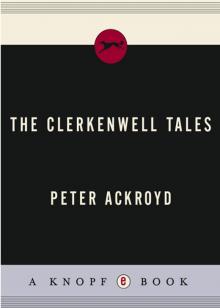 The Clerkenwell Tales
The Clerkenwell Tales The Canterbury Tales
The Canterbury Tales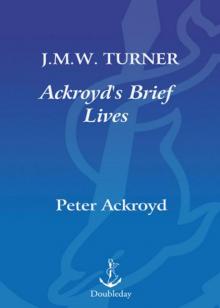 J. M. W. Turner
J. M. W. Turner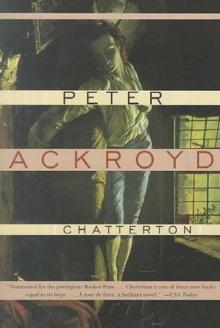 Chatterton
Chatterton The Canterbury Tales – A Retelling
The Canterbury Tales – A Retelling Alfred Hitchcock
Alfred Hitchcock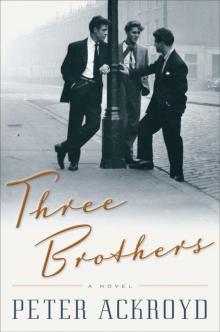 Three Brothers
Three Brothers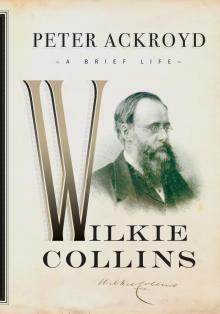 Wilkie Collins
Wilkie Collins Venice
Venice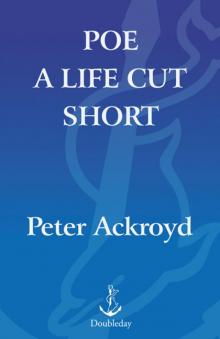 Poe
Poe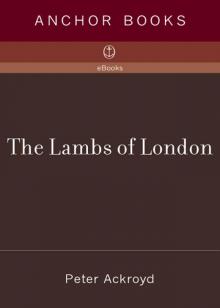 The Lambs of London
The Lambs of London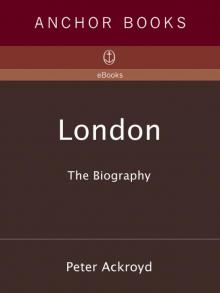 London
London Queer City
Queer City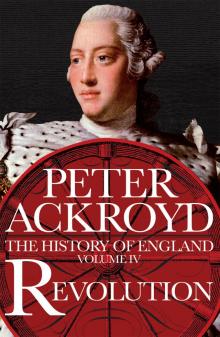 Revolution, a History of England, Volume 4
Revolution, a History of England, Volume 4 Venice: Pure City
Venice: Pure City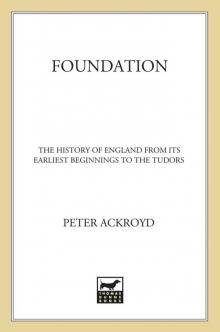 Foundation
Foundation Thames
Thames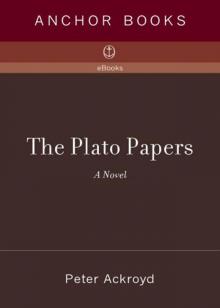 The Plato Papers
The Plato Papers The house of Doctor Dee
The house of Doctor Dee Rebellion: The History of England from James I to the Glorious Revolution
Rebellion: The History of England from James I to the Glorious Revolution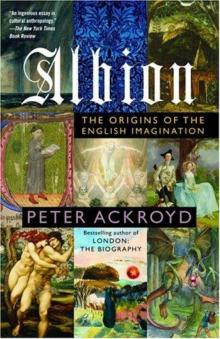 Albion: The Origins of the English Imagination
Albion: The Origins of the English Imagination The Fall of Troy
The Fall of Troy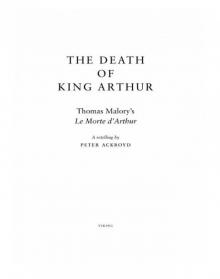 The Death of King Arthur
The Death of King Arthur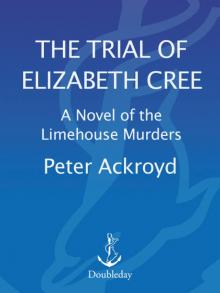 The Trial of Elizabeth Cree
The Trial of Elizabeth Cree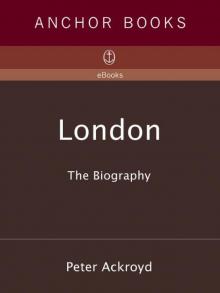 London: The Biography
London: The Biography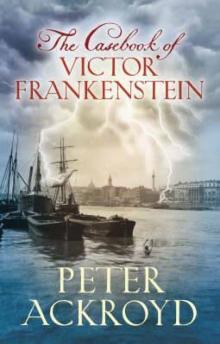 The Casebook of Victor Frankenstein
The Casebook of Victor Frankenstein Hawksmoor
Hawksmoor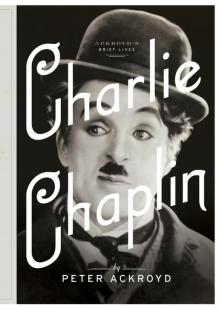 Charlie Chaplin
Charlie Chaplin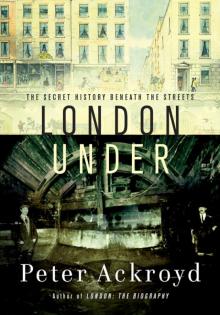 London Under
London Under